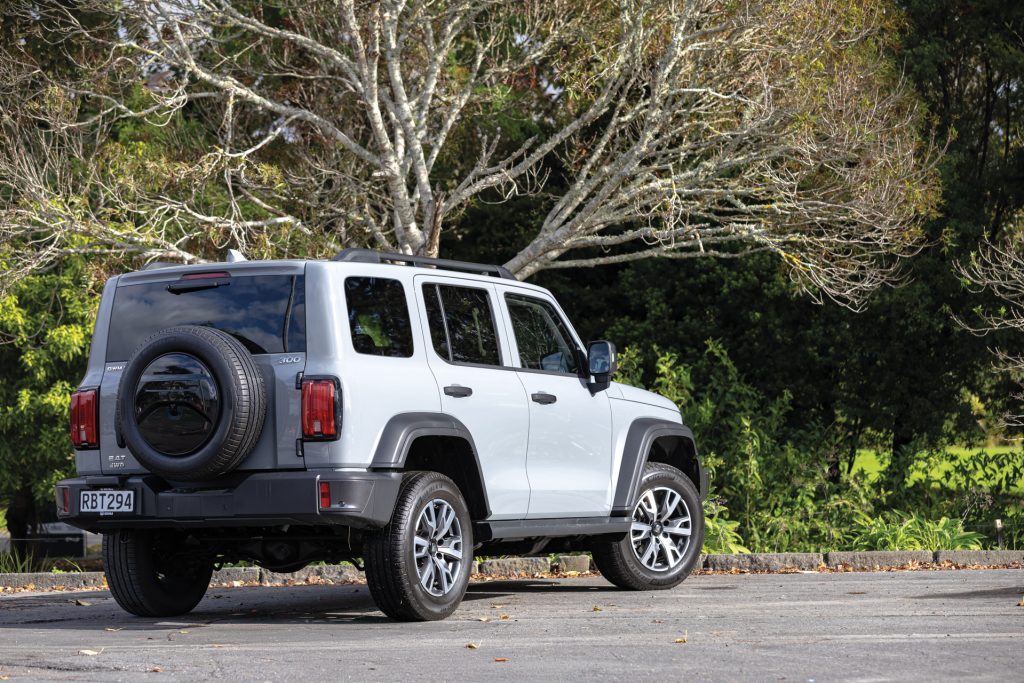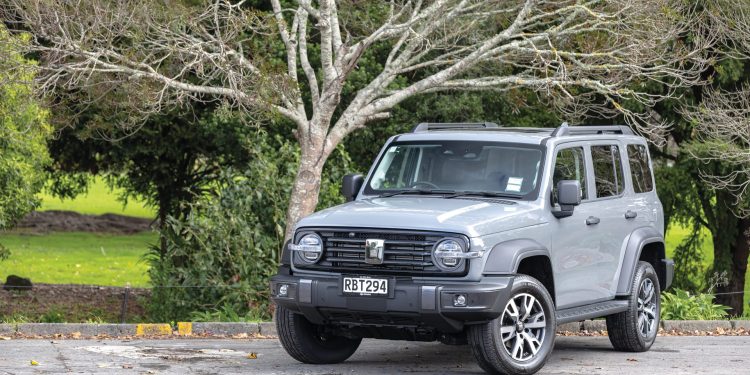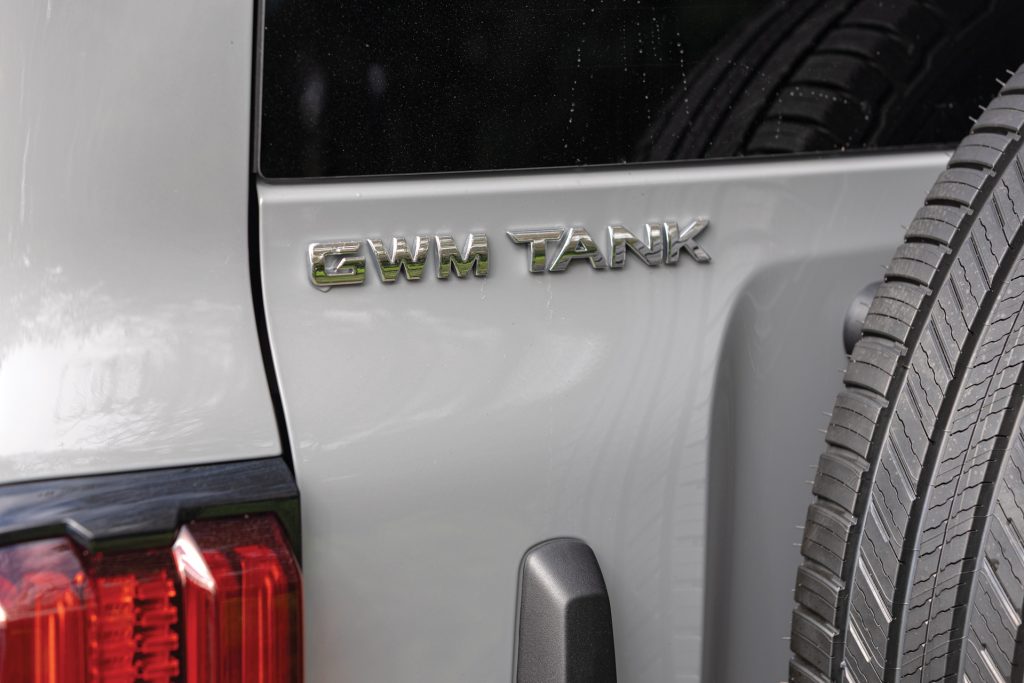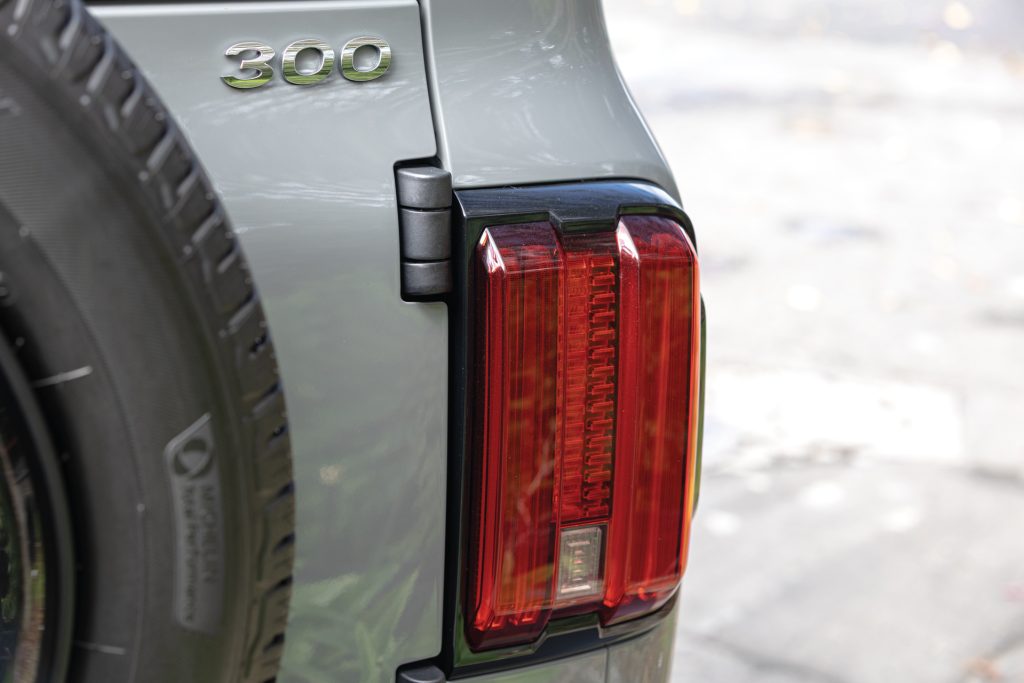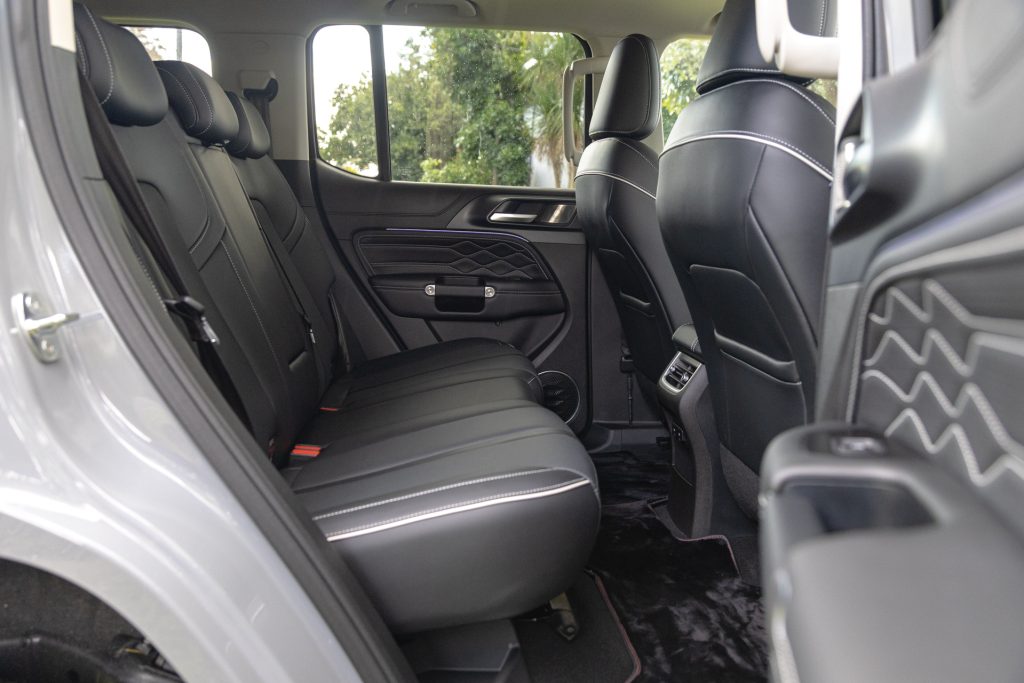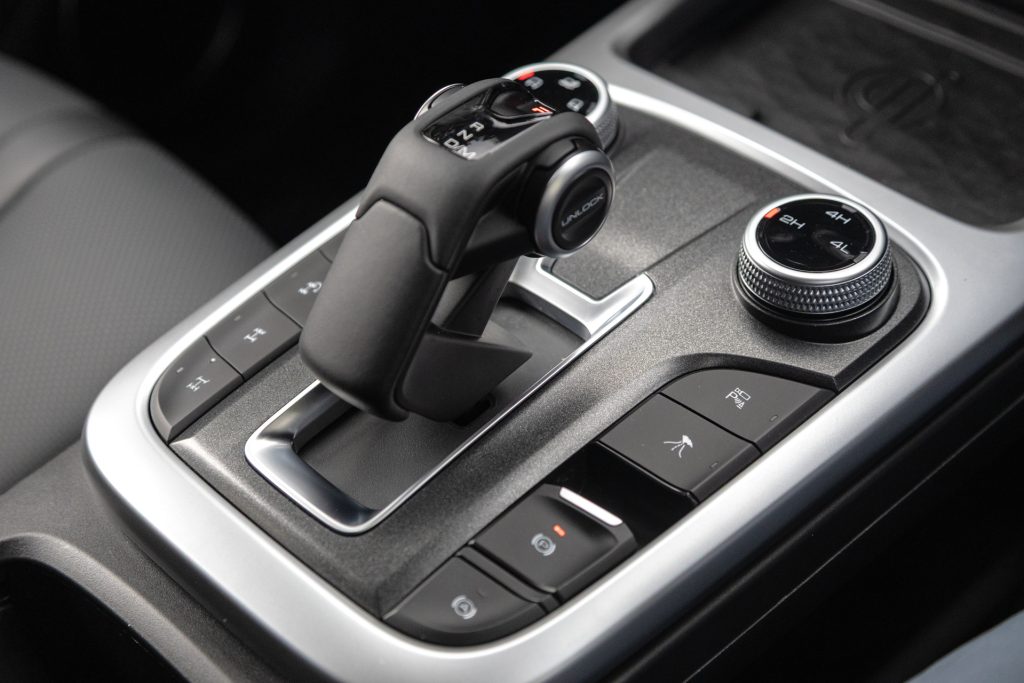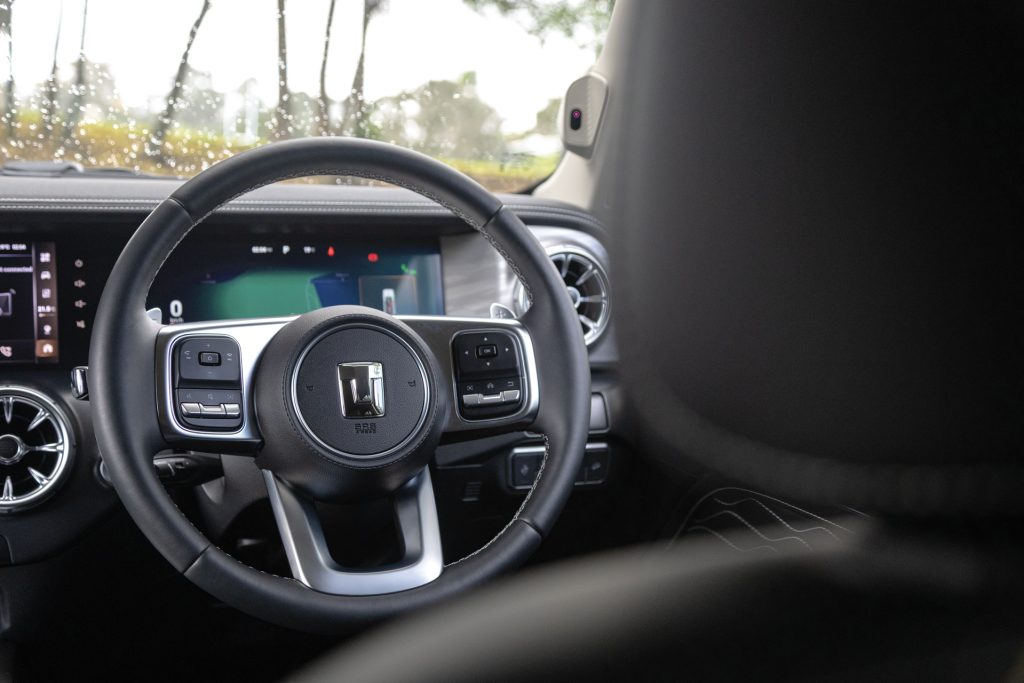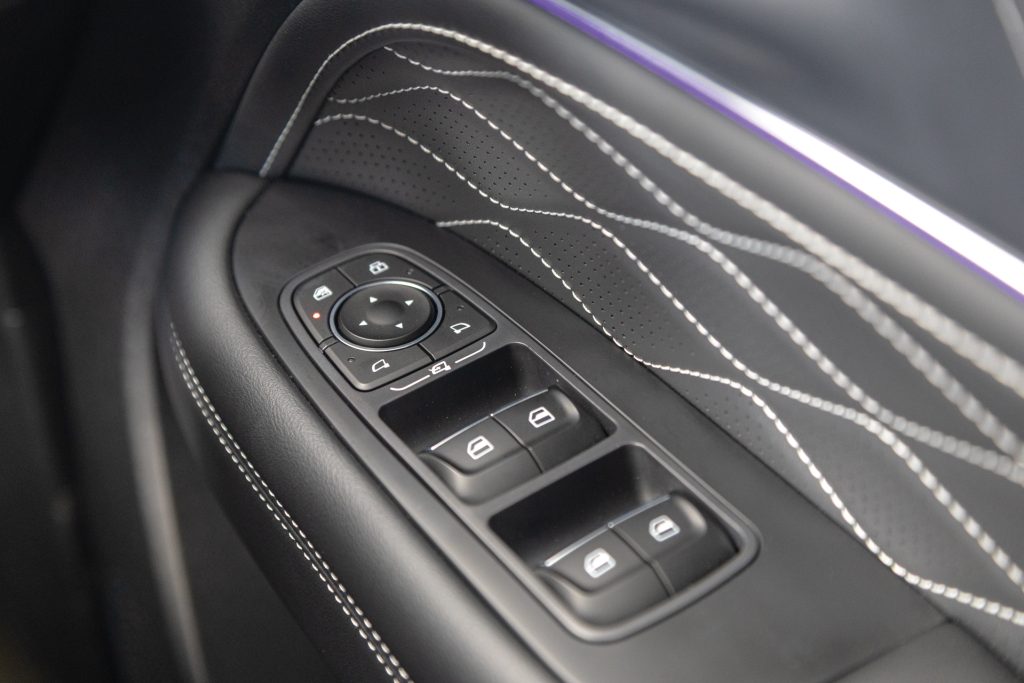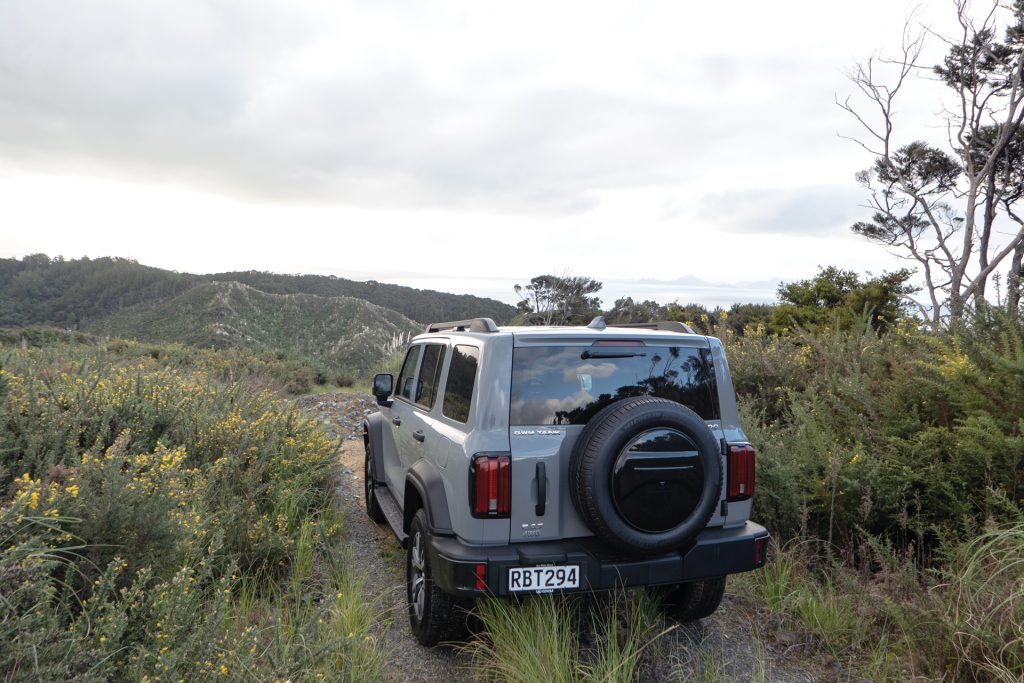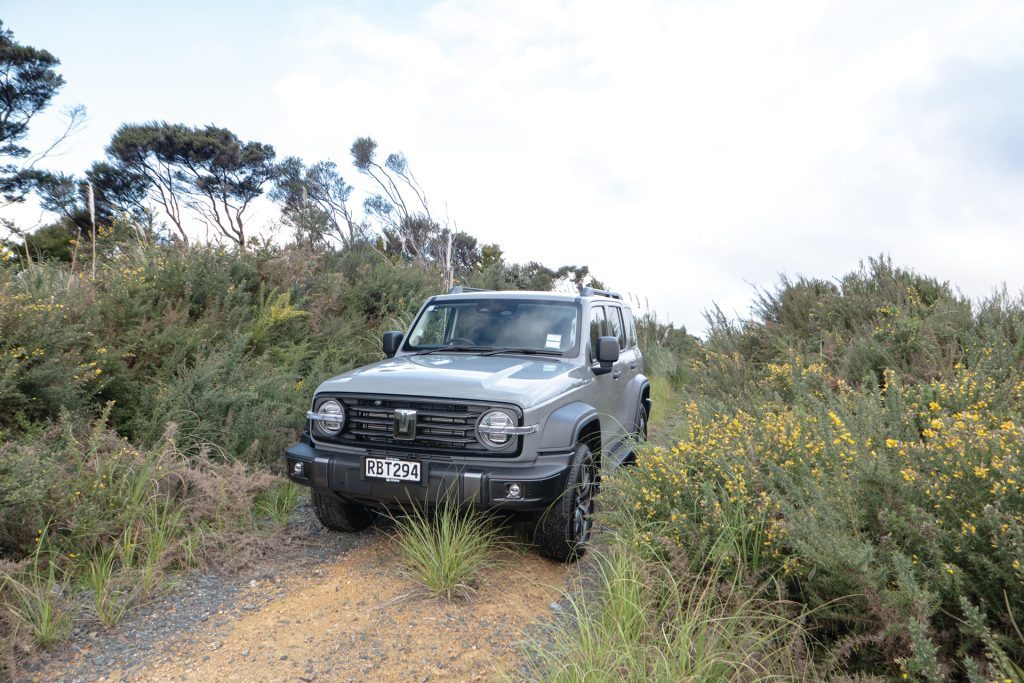2025 GWM Tank 300 Ultra Diesel
Words: Peter Louisson | Photos: Alex Schultz
The Chinese aren’t usually whimsical with their car names, quirky perhaps. But the Tank is different, vaguely resembling and turning like one, and now it has the motor it needed for towing.
In the ute world you’re not quite in the running unless your maximum braked towing capacity is 3.5 tonnes. And while in the SUV realm it’s not quite so critical, there are still those with boats and floats to haul who might not want a ute. Such people might well consider something that is based on a ute, however. Like, for example, the vehicle you see here, the GWM Tank 300.
The original model arrived in 2023 packing a 2.0 IL4T hybrid powertrain, good for 258kW and 615Nm of output. It offered pretty impressive performance for something weighing in at 2313kg, hitting highway speed in just over seven seconds. However, braked towing capacity was limited to 2500kg and mean fuel efficiency was pegged at 9.4L/100km.
Enter the diesel
And that’s in part why a compression-ignition version is now offered as part of the Tank 300 line-up. It comes with the same 2.4 turbodiesel as the Cannon double-cab ute, which is appropriate given this uses the same chassis and running gear. Being a diesel, it isn’t all that much lighter than the hybrid at 2280kg, so it’s solid for something that’s 4760mm long but then it is a body-on-frame design.
With the diesel donk doing the leg work, this is rated to haul braked trailers of up to 3000kg. So it is a better load hauler than the hybrid, even if its torque tally isn’t quite as robust at 480Nm from 1500-2500rpm. That said, it has a larger payload than the original Tank 300 at 600kg. And its overall fuel efficiency is pegged at 7.8L/100km (rightcar suggests 9.0L/100km). We noted a long term average of 9.0L/100km on the trip computer. During our time last year in the Lux Hybrid we reported figures in the 11s so you’re going to use less fuel in this, for sure, while having more in the way of towing capacity.
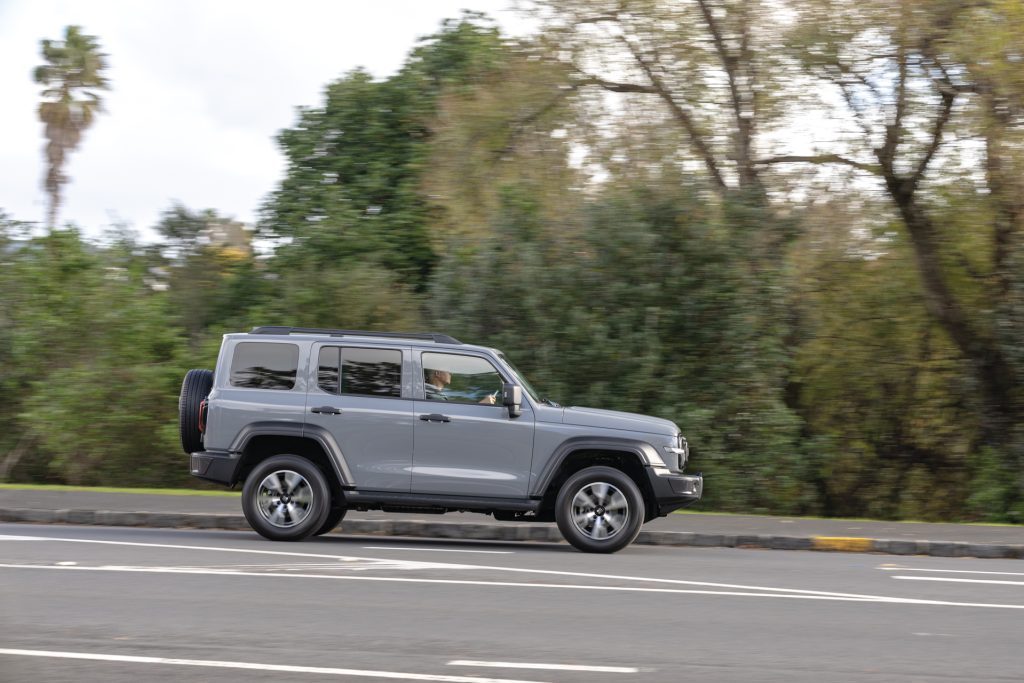
Darned sensors
Our time in the diesel didn’t kick off in the most auspicious way, with the engine light coming on and staying on the day after pick up. A quick diagnostic check showed nothing amiss but thereafter the engine light illuminated intermittently…for whatever reason.
Anyway, that minor sensor issue aside, the Tank 300 otherwise performed flawlessly. Being a diesel it hasn’t the sheer get up and go power of the hybrid which is vastly quicker. But then the diesel doesn’t have a 78kW/268Nm helper electric motor like the hybrid. So it is more ute-like for pace, taking 11.5sec to reach the metric tonne, and just under 10sec for the overtake.
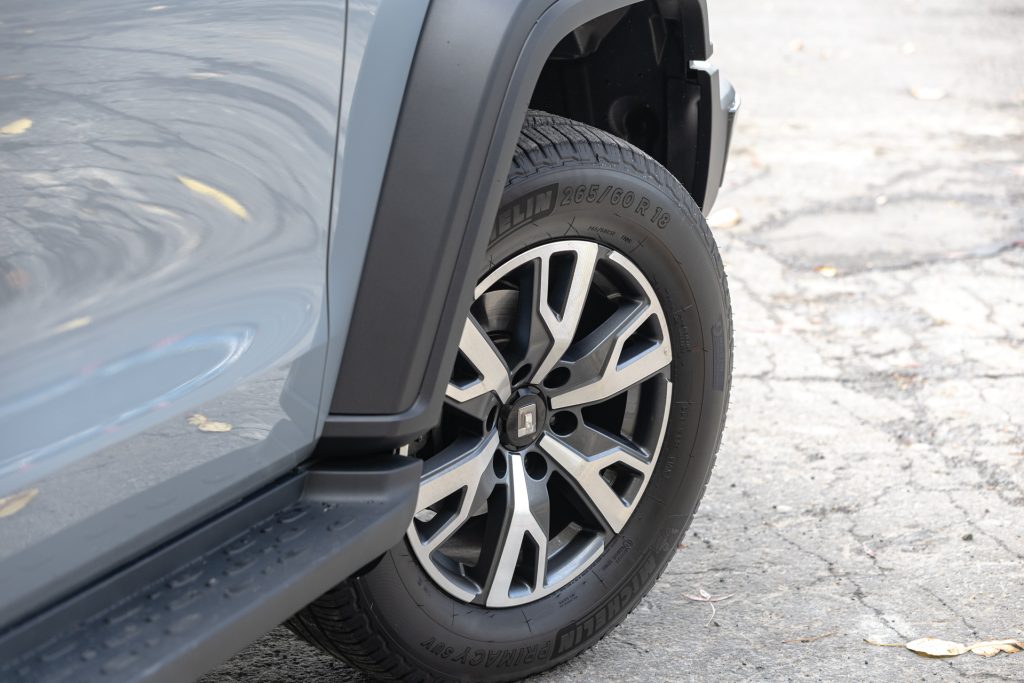
However, the range of the diesel impresses, a 75L tank good for almost 1000km of travel. And so too is the ease of the diesel. Most utes go surprisingly well, even if that’s not necessarily reflected by the numbers. When we wanted to overtake it managed that just fine, thanks in part to a nifty nine-speed auto. There are paddles behind the wheels too but we didn’t bother with them given the auto does a sterling job of keeping the motor where it needs to be.
We quite admired the handling of the Tank 300 Ultra Hybrid and this is the same, the tyres ultimately limiting things. But the ride is ute reminiscent, with its solid axle rear. It can be jiggly, despite a coilover set-up.
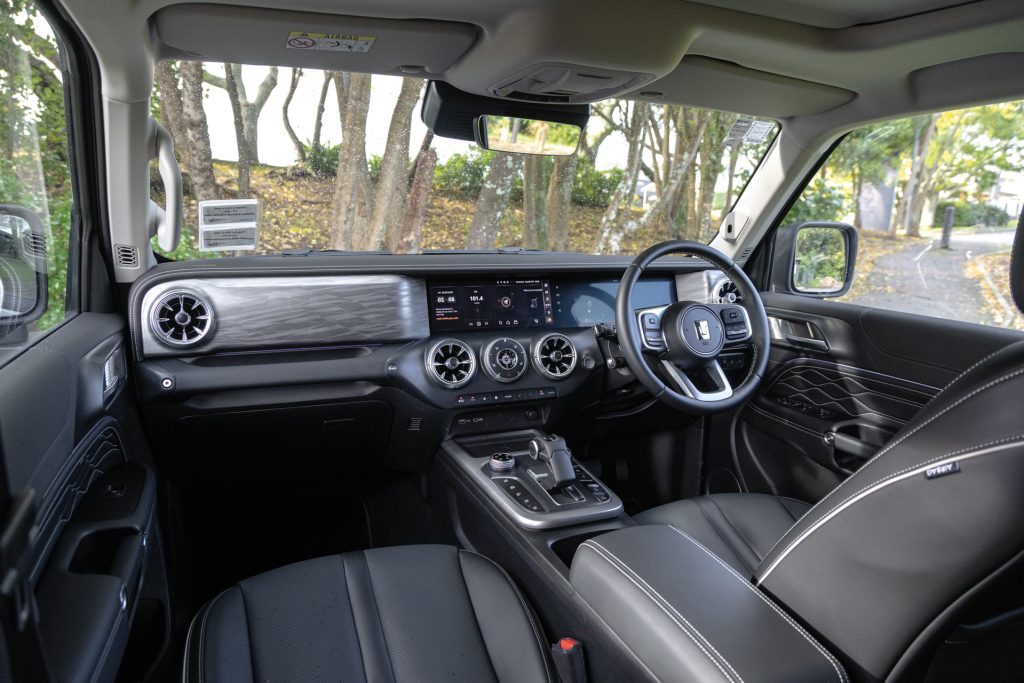
What’s inside?
The cabin is one aspect of the Tank that impresses. Okay, so clambering up isn’t that easy, though thankfully this has running boards to make the job easier. But once you’re up there, the seat motors into position, and the reverse occurs when leaving. There’s a decent lumbar pump too.
Inside is different good. We liked the aluminium mural-like finish above the glove compartment. Alongside are large chromed star drive heads, that add to the built-tough vibe of the machine. Vents look vaguely familiar, just like those on the AMG SL63 we drove around the same time. Seat heater buttons are nearby. Look up and there’s a tilt and slide sunroof, with a manual blind beneath. Look down and there are HVAC buttons. Initially it doesn’t look like there’s a central touchscreen but after the opening musical salvo a widescreen set-up appears.
It’s hard not to notice all the off-road gubbins here. That’s because the Tank is designed to go places, er, only a Tank can, kind of. It has 223mm of ground clearance, approach and departure angles of 33 and 34 degrees, respectively, front and rear diff locks, and 4H, 4L and 2L settings. There’s even a transparent chassis camera view for when you’re doing all that stuff. We trekked off to a spot we’d checked out before to assess its capabilities but in the interim a fence had gone up. Instead we made our way along an overgrown track, only to find no turnaround at the end. Reversing back had the sensors and autobraking system in a bit of a lather. But it never raised a sweat; the driver will before it does.
Irritating quirks
It does have some pesky driver features though. Set or cancel the adaptive cruise and a voice confirms that, so unnecessary. More annoyingly, even on the closest setting the Tank stays multiple car lengths from the vehicle in front, so all and sundry fill the gap and you steadily creep backwards which is contributing to a slowing of the economy. Perhaps it isn’t such a bad thing here though because the brakes aren’t especially inspiring.
Equally annoying is the saved radio stations system. Easy enough to save but if you want to scroll between the favoured few, that’s trickier. You need to go to the station list, tap on that, select favourites and you’ve got about 10sec to select another channel before it reverts back to the station list again.
Don’t yawn while driving either because every time for sure it will tell you to take a break. A yawn doesn’t automatically mean tiredness. Boredom with having to find favourites again, for instance.
What about cancelling lane assist that tugs away at the wheel? That’s hidden in a submenu, under Smart Drive which is right at the bottom of another submenu.
One last grumble is the two-step indicators which are too often hard to cancel.
On the other hand, spec levels are a bit of a surprise in a vehicle of this price and type. There’s steering wheel heating, the tilt/slide sunroof, seat heaters, paddle shifters, a quilted leather look for the seat upholstery and a Qi charge pad. But then this is the Ultra spec variant. An unusual feature is the side opening fifth door on account of the attached spare which limits rearward visibility somewhat. At least it isn’t totally filthy when you do get a flat, as the underslung spares will be. And it means a better departure angle too.
Tank 300 you’d consider if you want something off-road ready that turns heads, and offers more practicality, comfort and spec than the likes of smaller off-road personality Jimny 5-door at $41k.
Unless you need an SUV for moderately heavy towing duties, then you’re probably better off spending the extra $4k on the Ultra hybrid ($61,990 vs $57,990). Or save a grand and buy the Lux hybrid instead.
All Tank 300 versions offer a seven-year, unlimited km warranty.
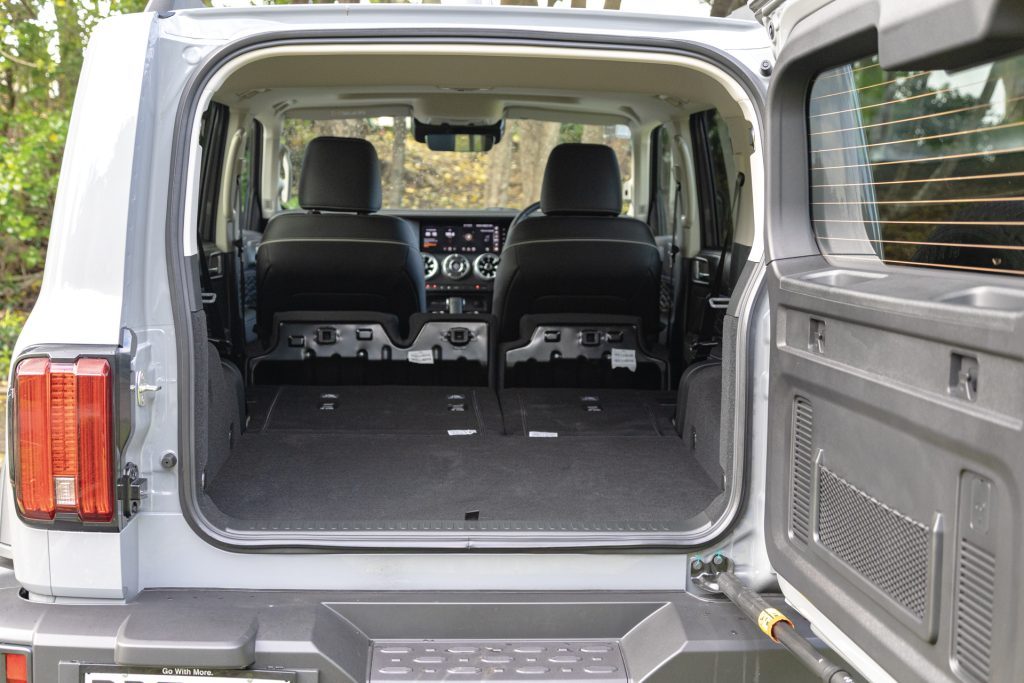
GWM Tank 300 Ultra Diesel
$57,990 / 7.8L/100km / 205g/km
0-100 km/h 11.54s
80-120 km/h 9.43s (268.3m)
100-0 km/h 40.75m
Speedo error 97 at an indicated 100km/h
Ambient cabin noise 69.2dB@100km/h
Engine 2370cc / IL4 / T / DI
Max power 135kW@3600rpm
Max torque 480Nm@1500-2500rpm
Drivetrain 9-speed auto / switchable 4×4
Front suspension Wishbones / swaybar
Rear suspension Solid axle
Turning circle 12m (3.25 turns)
Front brakes Ventilated discs
Rear brakes Discs
Stability systems ABS, ESP
Safety AEB, ACC, BSM, LDW, RCTA, ALK, AHB
Tyre size 265/60R18
Wheelbase 2750mm
L/W/H 4760 / 1930 / 1903mm
Track f-1608mm r-1608mm
Fuel capacity 75L
Luggage capacity 400-1635L
Tow rating 700kg (3000kg braked)
Service intervals 12 months / 15,000km
Warranty 7yrs / unlimited km
ANCAP rating ★★★★★ (2022)
Weight (claimed) 2280kg
